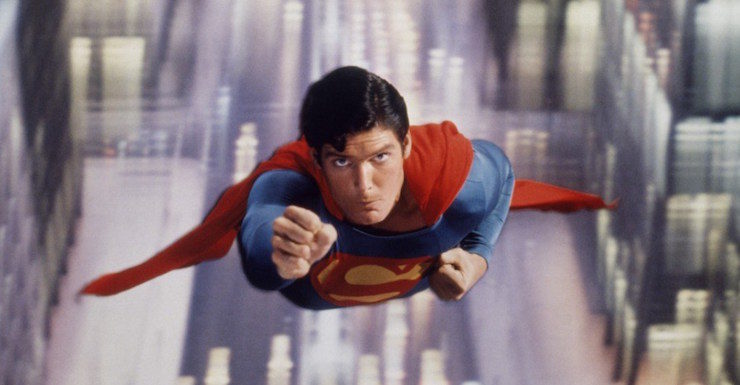In the early 1970s, the Salkinds—son Ilya and father Alexander—acquired the rights to do a Superman movie. While there were plenty of TV movies and pilots and series and such that had been done throughout this decade starring costumed heroes—Wonder Woman, Spider-Man, The Incredible Hulk, Captain America, Dr. Strange, all of which we’ll get to in due course—there hadn’t been a theatrically released comic-book superhero film since Batman in 1966, and even that was tied to a TV show. The Salkinds, though, wanted Superman on the big screen.
Superman had remained the most visible superhero in the world into the 1970s. Besides continuing to be DC’s flagship comics character, he was the subject of a Broadway play (It’s a Bird… It’s a Plane… It’s Superman), which was made into an awful ABC special in 1975 starring David Wilson (who played the man of steel as kind of a demented Ted Koppel). Marvel and DC’s first intercompany crossover happened in 1976 and teamed Superman with Spider-Man in a classic comic by Gerry Conway and Ross Andru, not to mention the epic Superman vs. Muhammad Ali.
For years, the Salkinds worked to get their production going. William Goldman and Leigh Bracket were both approached to write the screenplay, and then Ilya actually hired Alfred Bester—Hugo Award-winning author and former comic book writer (he’s the one who wrote the famous Green Lantern oath)—to do it, and man, do I want to live in the parallel universe where that happened. In our universe, Alexander overrode his son and instead hired Mario Puzo, because he was much better known. Looking back four decades, it’s hard to imagine any circumstance under which anyone would think the author of The Godfather was a better choice for a superhero film than the author of The Stars My Destination, but whatever.
The Salkinds’ list of possible stars for the film—whether in the title role, as Jor-El, or as Lex Luthor—is an impressive who’s who: Muhammad Ali, James Brolin, Charles Bronson, James Caan, Clint Eastwood, Dustin Hoffman, Bruce Jenner, Perry King, Kris Kristofferson, Steve McQueen, Paul Newman, Nick Nolte, Al Pacino, Robert Redford, Burt Reynolds, Jon Voight, Lyle Waggoner, Christopher Walken, and Patrick Wayne (who was actually cast, but dropped out when his father John—yes, that John Wayne—contracted cancer). In the end, while A-list actors Marlon Brando and Gene Hackman took on the roles of Jor-El and Luthor, respectively, they went with an unknown, Christopher Reeve to play Supes. Amusingly, Reeve was suggested early in the process by the casting director, but was rejected by director Richard Donner as being too young and skinny. This led to a Superman film where Jor-El and Lex Luthor had pre-title billing, while the title character was relegated to third billing after the title.
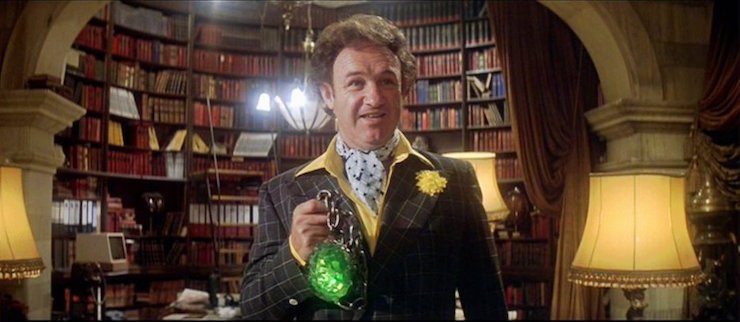
Donner, by the way, was one of another impressive list of possible directors considered, among them Francis Ford Coppola, William Friedkin, Richard Lester (who wound up taking over from Donner, more on that in a bit), Peter Yates, John Guillerman, Ronald Neame, Sam Peckinpah (who was dropped from consideration when he pulled out a gun during a meeting with the Salkinds), George Lucas, and Steven Spielberg. (Amusingly, Alexander was skeptical of hiring Spielberg, wanting to see how Jaws did first; when Jaws was a hit, Spielberg was in too much demand to be available. Irony!)
The original plan was to film the first two movies simultaneously, and Puzo’s original screenplay was to cover both movies. Having said that, Puzo turned in a 550-page screenplay (the average movie is around 125 or so), and several writers both credited (David & Leslie Newman and Robert Benton) and not (Tom Mankiewicz, given a “creative consultant” credit, and George MacDonald Fraser, who said he did very little work) were brought in to curb the script’s excesses both in tone and length.
From this development process, chaotic even by the high standards of Hollywood, we got a series of Superman movies. And the chaos continued, as Donner quit in disgust after having filmed about three-quarters of the second film. Richard Lester—originally hired as a go-between once Donner stopped talking to the Salkinds—replaced him, re-shooting large swaths of the second movie. Lester was brought back to helm the third film. Hackman didn’t return for the third, and Margot Kidder’s role as Lois Lane was reduced to a glorified cameo (despite her getting better billing in number three), and rumors have persisted that they were marginalized due to their siding with Donner. Those rumors were helped by the fact that Hackman returned and Kidder’s role returned to prominence in the fourth film, after the Salkinds had sold off the rights to Cannon Films.
That fourth film was, like the third, a disappointment both critically and financially, and it signaled the end of the Superman films for the time being.
“He’s not just a mild-mannered reporter…”
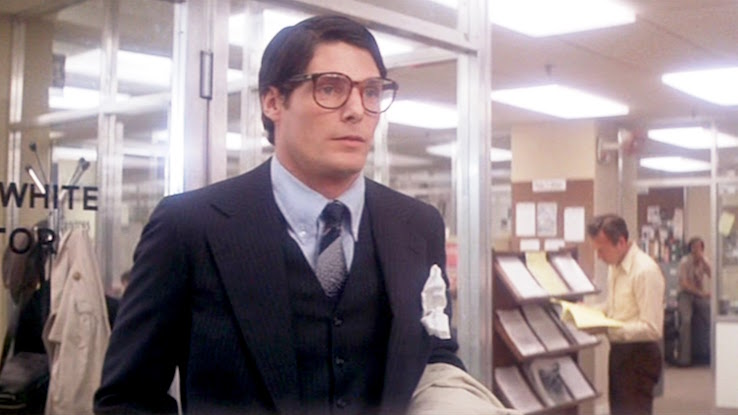
Superman
Written by Mario Puzo, David Newman, Leslie Newman, and Robert Benton
Directed by Richard Donner
Produced by Ilya Salkind
Original release date: December 15, 1978
Superman II
Written by Mario Puzo, David Newman, and Leslie Newman
Directed by Richard Lester
Produced by Ilya Salkind
Original release date: June 19, 1981
These two films were conceived simultaneously, at least partly filmed simultaneously, and intended to be released one year apart. (The title card at the end of the first movie said to expect Superman II next year.) While that didn’t go as planned (Donner’s ouster and Lester’s re-shoots of the second film added a year and a half or so to the process), the two movies do work as a kind of single extended storyline…
We open on the planet Krypton, with Jor-El prosecuting three revolutionaries who are convicted of treason and sent to the Phantom Zone. Their leader, General Zod, boasts that some day Jor-El will kneel before him, as will his heirs. He’s half right…
After Zod, Ursa, and Non are sent off to the Phantom Zone (a flat square in which the trio can be seen to be trapped, a very low-key but effective bit of SFX), Jor-El tries to convince the council that the world is about to explode. The council thinks it’s just a normal shifting of orbit, thus proving that nobody writing the script understands anything about astronomy (shifting orbit is kind of a big deal). Jor-El and his wife Lara put their infant son Kal-El into a small ship and trundle him off to Earth, where he’ll be powerful, and the many-years journey through space (allegedly through many galaxies, also showing that nobody writing the script understands anything about astronomy) has him being educated by the ship.
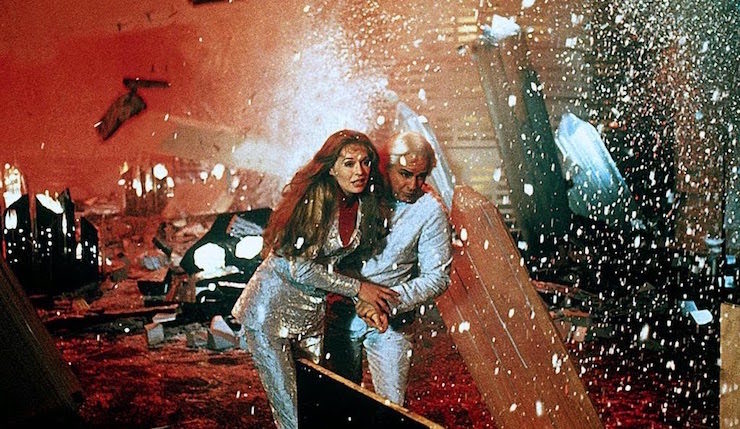
Krypton goes boom. Everyone dies. It’s sad.
Kal-El’s ship crashes outside of Smallville, Kansas, where the toddler is rescued by Jonathan and Martha Kent, who raise him as their own, naming him Clark. They know from jump he’s different—not five minutes after they rescue him, he lifts their car with his bare hands—but he keeps that light under a bushel for the most part. Jonathan tells his teenage son—annoyed at not being able to be on the football team (which would, it should be pointed out, be horribly unfair)—that his gifts are for a higher purpose, not to score touchdowns. Right after that, Jonathan dies of a heart attack.
After the funeral, Kent takes a crystal from the ship he came to Earth in and is compelled to go north. He reaches the Arctic, er, somehow and throws the crystal into the snow, which then constructs a giant Krytponian fortress. An AI that mimics Jor-El teaches him, basically, everything over the course of twelve years, and then Kent flies off in his familiar Superman outfit.
Kent moves to Metropolis and gets a job at the Daily Planet as a reporter, er, somehow. He meets Lois Lane and is smitten, and surreptitiously saves her life from a mugger’s bullet. He later introduces himself as Superman by saving Lane from a helicopter crash, and then proceeds to stop a couple of robberies and rescue a cat from a tree. Everyone wants to know who this guy is, and he decides to give Lane the exclusive interview, and also takes her flying. (He comes within a hairsbreadth of revealing that he’s also Kent, but chickens out.)
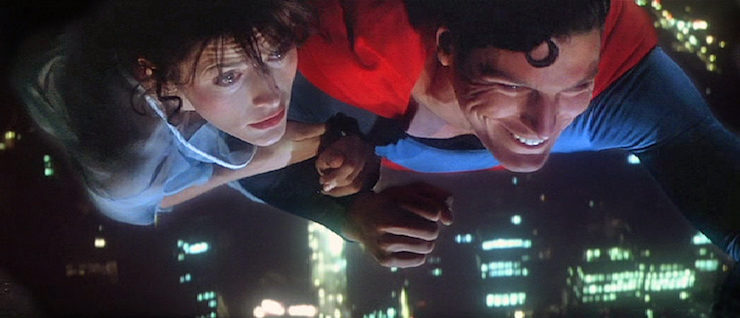
From his headquarters underneath the city, Lex Luthor and his henchfolk, Otis and Eve Tessmacher, plot their latest scheme, a violent real-estate scam. He’s buying up cheap land in the Nevada desert, then will commandeer a couple of missiles to hit the San Andreas fault and sink California into the ocean (“like the mystics and statistics say it will“), thus making his new acquisitions valuable beachfront property.
He also gets his hands on some Kryptonite that is in a meteor that crashed in Addis Ababa. Using a special frequency that only Superman (and dogs) can hear, Luthor summons Superman to his lair and hits him with the Kryptonite. With the deadly rock slowly killing him and rendering him helpless, Luthor tosses him into a pool.
Luthor only needs one missile to sink California, so he sends the other one to Hackensack, New Jersey.* However, Tessmacher’s mother lives in Hackensack, so she goes behind Luthor’s back and removes the Kryptonite (but not before kissing Supes first), freeing him to stop both missiles. Hackensack is saved, but the missile actually strikes San Andreas before he can get there. However, he is able to repair the fault and save several lives.
*Digression: I first saw this film in the theatre at the age of nine when my aunt took me to see it. We saw the movie in a theatre in Hackensack, and when Luthor revealed the target of the second missile, we all lost it in the theatre. And when he stopped the missile, we cheered particularly loudly, as Superman had just saved all of us…
One life he can’t save, though, is Lane’s, as an aftershock buries her car with her in it. However, Superman, unable to face a world without her, manages to go back in time so he can save her. Sure.
Once everyone is safe, Superman takes Luthor and Otis to prison.
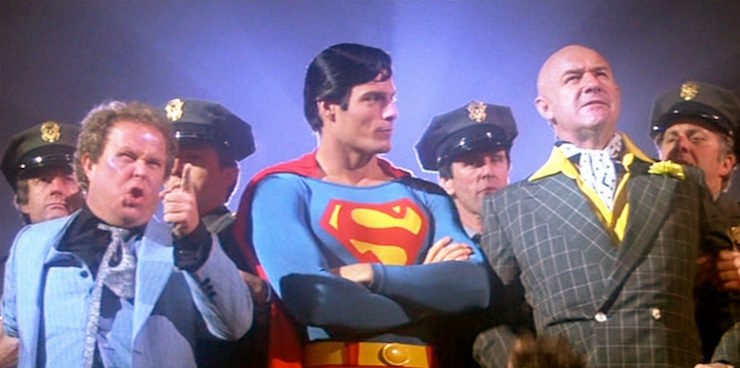
Later, Lane travels to Paris to do a story on terrorism, and terrorists take over the Eiffel Tower, threatening to destroy it with a hydrogen bomb. Superman flies across the Atlantic, saves Lane, stops the terrorists, and tosses the H-bomb into space. However, the bomb’s shockwave hits the Phantom Zone trap, and Zod, Ursa, and Non are freed. They go to the moon first, destroying a moon lander and killing the three astronauts. They then proceed to Earth where they terrorize a small town and eventually travel to D.C. where they force the president to abdicate to them.
Superman misses all this because Kent and Lane are assigned to a story in Niagara Falls, and Lane finally figures out that Kent is Superman. Kent denies it at first, but eventually he capitulates, and flies her to the Arctic to show her the Fortress of Solitude. He then relinquishes his powers so they can have sex. (Really, that’s the only explanation that makes sense, since they hop into bed right after he de-powers. It has to be that that was the only way for them to safely copulate. Obviously somebody read “Man of Steel, Woman of Kleenex“…)
They head back southward from the Arctic, er, somehow. En route, they stop in a diner, where a trucker takes Kent’s seat, and when Kent attempts to take it back the trucker beats the shit out of him. Right after that, they find out about Zod and the crew, and Kent realizes he has to get his powers back, even though the AI that now mimics Lara because Marlon Brando was too expensive to get back for another film told him that the process was irreversible. So he goes back to the Arctic, er, somehow, and reverses the irreversible, er, somehow.
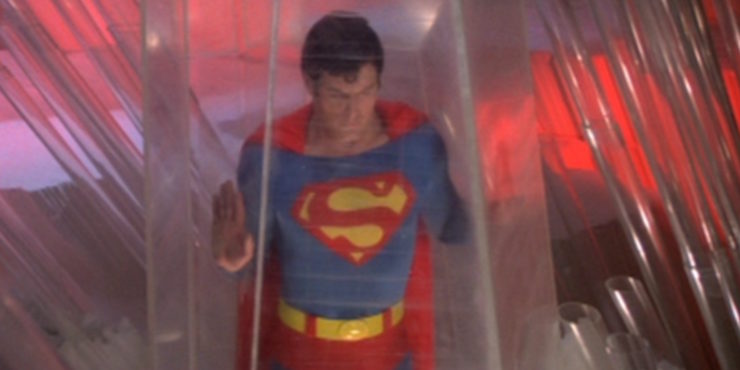
Luthor—who escaped from prison thanks to Tessmacher, and invaded the Fortress of Solitude, thus learning most of Superman’s background, including all about Zod and his gang—works his way to the White House to tell Zod that he can give him the son of Jor-El. Zod takes the Daily Planet hostage, as kidnapping Lane is the best way to call Kal-El out, and sure enough, Supes shows up and they duke it out—first all over the streets of Metropolis, and then Superman leads them north to the Fortress. They bring Luthor along, as well as Lane as a hostage.
That last part was clever, as Superman surrenders rather than allow Lane to be hurt. Zod also tells Ursa and Non to kill Luthor. Luthor tries to suck up to Superman now that they’re both on the hit parade, and Superman whispers about the power-removing thingie to him. Luthor turns around and betrays Supes by telling Zod about it, and they put Supes back in the box that will again take his powers away. However, Superman reversed the polarity (or whatever) before company arrived, and so the effects are now outside the box instead of inside it. Zod, Ursa, and Non are now normal, and Superman kills all three of them in cold blood. (Well, to be fair, he only actually kills Zod. Lane kills Ursa, and Non just falls into a chasm on his own.)
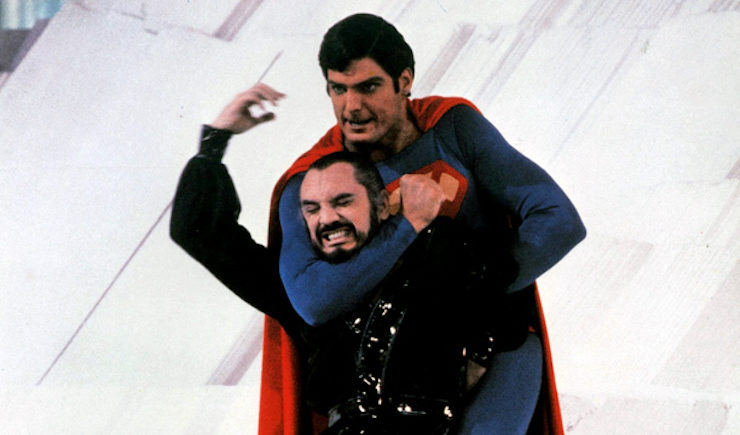
Lane is having trouble handling being in a relationship with Superman, as she knows he’ll be in danger all the time. When Kent asks what he can do, she says, “Say you love me.” Instead, he kisses her and, without her consent, gives her super-amnesia. He didn’t even say he loved her, the bastard. She no longer remembers anything after Niagara Falls.
Superman goes back to the diner in order to beat the crap out of the trucker, which is spectacularly petty and unworthy of him, then he puts the flag back on top of the White House (Zod removed it forcibly) and promises the president that he won’t let him down again.
“Superman’s bad!”
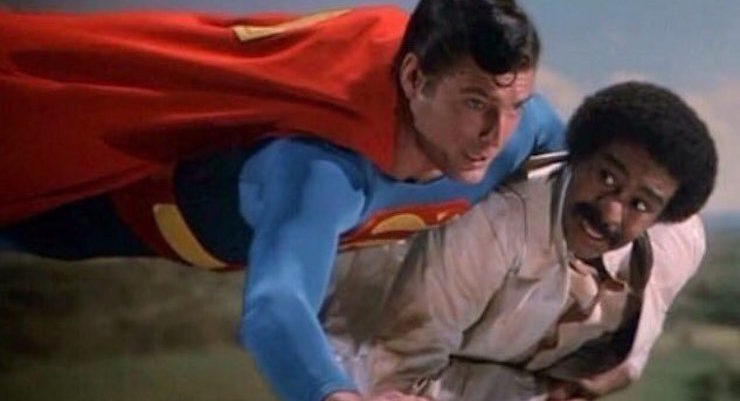
Superman III
Written by David Newman & Leslie Newman
Directed by Richard Lester
Produced by Alexander & Ilya Salkind
Original release date: June 17, 1983
A completely absurd Rube Goldberg sequence ensues over the opening credits involving a seeing-eye dog abandoning a blind person (which would never happen), phone booths being knocked over like dominoes, wind-up penguins wandering the streets, people falling into construction holes, and other weirdness that toes the line between slapstick and dangerous. None of it has any bearing on the plot.
Lane is off to Bermuda for vacation, and Kent heads back to Smallville for his high school reunion, though for him it’s a working trip, as he’s going to write about small-town life and going home again for the first time in years. Jimmy Olsen goes with him to take pictures.
En route, they encounter a chemical fire, which Superman puts out, though Olsen breaks his leg trying to get pictures. In particular, Superman stops the fire before an acid can heat up. At room temperature, it’s inert, but when it’s heated it turns into an acid that can eat through anything. This will probably be important later.
He then goes to his reunion, where he’s reunited with Lana Lang, whom he had a crush on in high school. She married the prom king, had a kid, then divorced him, leaving her a single mother in a town where the only eligible bachelor is an asshole. As Kent’s urging, she considers a move to Metropolis.
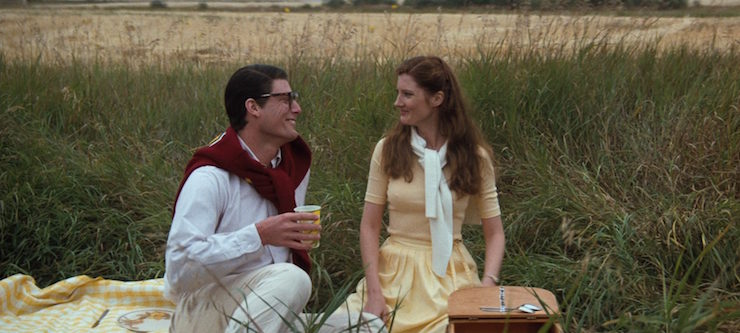
A down-on-his-luck schlub named Gus Gorman takes a correspondence course in computer programming and discovers he has a tremendous aptitude for it. He gets a job working for industrialist Ross Webster as a low-level programmer, and he manages to embezzle more than $85,000. This comes to Webster’s attention, and he decides not to prosecute Gorman, but instead to employ him more directly. He has Gorman reprogram a weather satellite that apparently can affect weather, er, somehow to hit Colombia with a tornado that will destroy the coffee crop, thus giving Webster a monopoly on non-Colombian coffee, which he controls. (Colombia was holding out.) However, Superman saves the South American nation.
Webster decides he must destroy Superman, so he has Gorman use the satellite to examine Kryptonite so they can fabricate a batch and kill Superman. However, there’s an element the satellite can’t recognize, so their Kryptonite is imperfect. It doesn’t kill Superman, but it does make him evil. He stops saving people, straightens the leaning tower of Pisa (thus badly damaging tourism in that Italian city), trashes a bar, and just generally makes an ass of himself. Webster uses his masseuse, Lorelei, to seduce him and get him to aid in his plan to control the world’s oil—Gorman stops all the drills and sends all the oil tankers to the mid-Atlantic via computer, er, somehow. The one tanker that refuses to comply with the order, Lorelei sends Superman to trash, causing a major oil spill.
Lang’s kid sees Superman at one point and urges him to be good again, and it’s enough to cause a crisis of conscience. Superman and Kent have an endless semi-virtual fight in a junkyard and Kent emerges victorious. However, Webster has built a super-computer that Gorman designed that can defend itself against any attack. From there, Webster tries to kill Superman, but it doesn’t work. Gorman tries to pull the plug, but the computer is able to draw power from elsewhere. Superman flies back to Smallville and retrieves the acid, which the computer reads as harmless. Then Superman opens the canister and heats it up, causing it to eat through the computer, destroying it.
Webster and his cronies are sent to jail, but Superman lets Gorman go for some inexplicable reason. He re-leans the tower and cleans up the oil spill. Lane returns from her Bermuda vacation with a big story about corruption in the Caribbean to discover that Lang is now working as a secretary at the Planet.
“Destroy Superman!”

Superman IV: The Quest for Peace
Written by Christopher Reeve, Lawrence Konner, and Mark Rosenthal
Directed by Sidney J. Furie
Produced by Menahem Golan & Yoram Globus
Original release date: July 24, 1987
Superman saves the lives of some cosmonauts in space whose orbiter is threatened by debris, then returns to terra firma to find out that a tabloid monger named Warfield has bought the Daily Planet and plans to turn it into the same kind of sleazy rag he specializes in. He puts his daughter Lacy in charge, though she’s slightly less of a scum-sucking weasel than her father, and also has a crush on Kent.
Kent is selling the family farm, and he finds a Kryptonian crystal that can do one big thing and then go inert. It’s the last gasp of his Kryptonian assistance, and will probably be important later.
A kid writes a letter to Superman care of the Planet asking Superman to do something about all the nuclear weapons. The president has just announced that a recent summit with the Soviet Union went south, and they’re going to have to make sure their nuclear arsenal is far stronger and more powerful than ever. (Ahem.) Superman doesn’t like this, and he agonizes about it for some time. He reveals his true identity to Lane again and takes her flying so he can discuss this in depth with her—and then he kisses her into amnesia again, which makes you wonder how many times he’s done this.
He marches to the United Nations and announces to the General Assembly that he’s removing all nuclear weapons from the Earth. This is met, not with outrage and (justifiable) accusations of Superman being a terrorist, but instead raucous applause. Okay, then.
Luthor escapes from prison with the aid of his nephew Lenny, whom Luthor describes as “the Dutch elm disease on my family tree.” He then gathers a consortium of arms dealers to restock the nuclear weapons that Superman is regularly tossing into the sun.
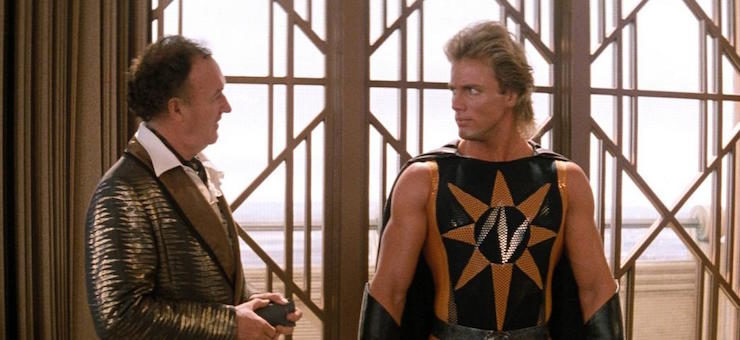
In addition, Luthor steals a lock of Superman’s hair from a museum that the man of steel donated it to and creates a Superman clone that looks nothing like Superman called the Nuclear Man, who is as powerful as Supes, but has Luthor’s voice. Luthor lures Superman to his lair the same way he did in the first movie (which takes Supes away from a ridiculous dinner date involving both him and Kent, as well as Lane and Lacy) and then the two men of steel duke it out all across the world. The Nuclear Man takes out the Great Wall of China; Superman repairs it with his wall-repairing vision (yes, really). The Nuclear Man activates the volcano outside Pompeii; Superman plugs it with a piece of another mountain. The Nuclear Man steals the Statue of Liberty and throws it at midtown; Superman catches it and puts it back, but not before the Nuclear Man scratches him, making him sick.
Luthor betrays his consortium and uses the Nuclear Man to threaten Metropolis. Superman uses his Krypton ex machina to restore himself and then he beats up the Nuclear Man some more, saving Lacy’s life in the process, as the Nuclear Man kidnaps her and takes her toward the moon before being too far from the sun deactivates him. Somehow, Lacy doesn’t die in the vacuum of space, and Superman rescues her, then places the Nuclear Man in a power planet, where he provides energy for the world, er, somehow.
Superman then holds a press conference saying that the world has to help itself and he can’t interfere. Okay, then. Perry White buys the Planet back, Luthor is back in jail, and Lenny’s in a school for boys.
“You’ve got me—who’s got you?”

It’s funny, one of the (justified) digs against Zack Snyder’s interpretation of Superman in Man of Steel and Batman v. Superman: Dawn of Justice is that Superman acts out of character. Supes is a hero, not a mopey, angst-ridden person who would snap Zod’s neck or just stand there when the Capitol Building is blown up.
Those arguments tend to long for the good ol’ days when Christopher Reeve was Superman, which sounds good, but watching these movies again, it’s obvious that the Salkinds and the people they hired (and the people who succeeded them) didn’t always get it, either. We’ve got Superman giving up his power and responsibility so he can get laid, we’ve got Superman beating up a bully for no compellingly good reason except for an immature “gotcha” moment that is unworthy of him, and we’ve got Superman casually letting Zod, Ursa, and Non die in the Arctic—in Zod’s case, by his own hand.
And then we’ve got Superman altering Lane’s memories without her consent. Not just once, but twice. You can argue that the first one was to save her from the emotional trauma of dating Superman (though that’s damned presumptuous of him) but the second time? He does it just so he can go on a consequence-free joyride with her and get her advice. To say that’s appalling doesn’t begin to cover it.
What’s fascinating watching these movies again is that, in terms of general plot, the third one is actually the one that’s the best straight-up Superman story. Webster is the perfect villain, a greedy industrialist, who uses his underlings to further his agenda at the expense of the common person. It’s only too bad that the movie is dumber than a box of rocks, wasting a great actor in Robert Vaughn, not to mention the comic talents of Pamela Stephenson. (Stephenson was a brilliant comedian, but most people she worked for couldn’t see past her looks, so she quit acting and comedy in disgust, and instead got her PhD in clinical psychology.) Richard Pryor didn’t annoy me as much as I thought he would, mostly because he does have a certain amount of heart, and he’s also actually funny, which is one up on most of what passes for comedy in the misbegotten third film.
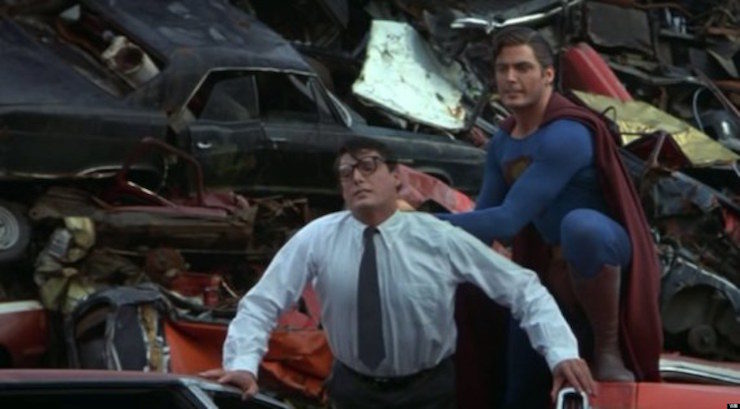
Mostly the third movie shows absolutely no understanding of how computers work, which is a problem if that’s what you’re basing your plot on. On the other hand, the absurd slaptstick opening sequence makes it clear that nobody involved in making the film is taking it seriously, so why should we? Which is good, as the junkyard scene of Good Kent facing Evil Superman is not only idiotic and embarrassing, it goes on waaaaaaaaaay too long.
The first movie is, unsurprisingly, the strongest of the four, though even there you can see the seams from the lunatic process by which it and its sequel were both written and filmed. (It doesn’t help that top-billed Marlon Brando can’t even be arsed to do anything as good as phoning in his performance; he’s a disaster, and substituting Susannah York’s Lara for him in the second film is frankly something of a relief.) The opening on Krypton is actually quite well done, even with the drag effect of Brando’s somnabulent line readings, the crystalline art direction for Krypton making Superman’s home truly alien. The Smallville scenes are brief and effective (if you’d told me before this week that Glenn Ford was only actually in two scenes as Jonathan Kent, I’d have said you were lying; he created that much of an impression that it felt like he was in it more), and while Luthor’s plan is pretty over-the-top and absurd (also, where does he get the resources to build an underground headquarters, fly around the country to alter missiles and steal Kryptonite, and so forth?), it still works, and has consequences. Superman going back in time to save Lane probably seemed like it would show the depths of their love, but mostly it just comes across as artificial suspense.
The second movie has much bigger problems. Terence Stamp and Gene Hackman make up for a lot of those flaws, as they’re both superlative bad guys, if somewhat one-dimensional. Still, the moment when the president kneels down and mutters, “Oh God,” and the general corrects him, “Zod!” is one of the finest villain moments in superhero movie history.
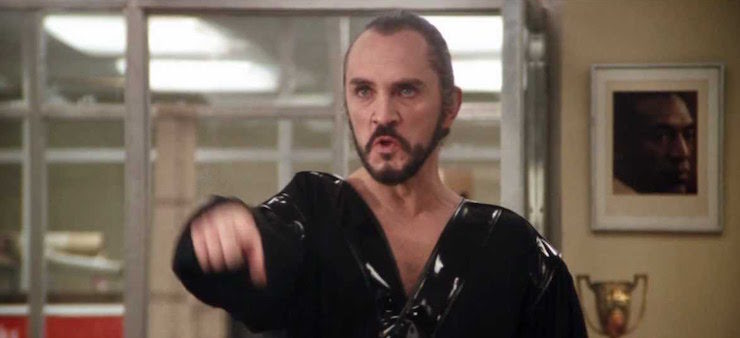
But the fact that parts of this movie were filmed a year or more apart are evident in differing hairstyles and actors’ weight and looks. The movie is at once serious and slapstick, with Non in particular made the butt of jokes for no compellingly good reason. (If you want to know what the movie would have been like had Donner finished it himself, one can get the “Donner cut” on DVD.)
Worse, though, is that Superman isn’t a hero in most of this movie. The Eiffel Tower scene is pretty much it—after that, he’s too busy mooning over Lane to actually notice that three Kryptonians are wreaking havoc. And does he lure them out of the city right away to avoid people getting hurt? No, he stays in town so we can have the big fight in Metropolis before heading north.
Reeve does superlative work in these films. Forty years later, the effects don’t look all that special, but they were cutting-edge for the time, and gave much more verisimilitude to Superman’s powers. But what Reeve accomplished was something that nobody else who has played Superman in live action has truly managed: he made us believe a person could use a pair of glasses as a disguise. He did that by not relying on his outsized specs—his posture, his body language, his voice, all of it changed when he was Kent. It remains one of the most effective dual-identity performances in the superhero pantheon, and it—along with Reeve’s general earnestness—helps sell the movies and cover a multitude of sins.
Which is good, as the movies commit many. Despite their flaws, though, they did pave the way for more superhero movies in the theatre.
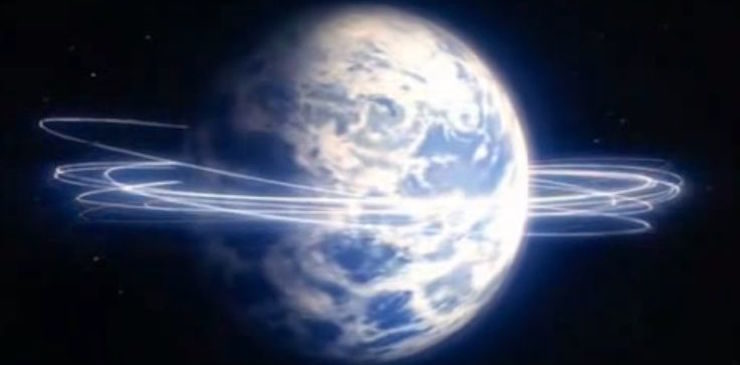
But before we dive into that, we’ll be looking at some of the TV movies of the 1970s and 1980s released on either side of Reeve’s efforts. Next week, Marvel’s first attempts at Spider-Man and Dr. Strange.
Keith R.A. DeCandido does sometimes believe that a man can fly.










